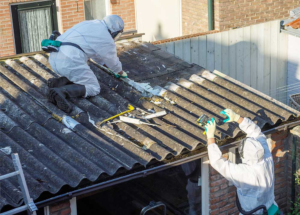Deck Cleaning Charleston SC makes a big difference in the appearance of your wood deck. A pressure washer is faster for rinsing, but a garden hose with a sprayer attachment or scrub brush will also work. For mild stains and dirt, use a detergent diluted with water.
If you have stubborn stains like mold, try baking soda. Other safe and natural home remedies include vinegar, table salt, or oxygen bleach (less harsh than liquid chlorine bleach).

Compared to manual cleaning methods, such as using a hose, scrub brush, or non-chlorine bleach and a mop or sponge, a pressure washer is leagues faster and more effective at cleaning decks. The heat and friction delivered by pressurized water loosens debris and blasts it away, leaving surfaces looking fresh and new again. It also fully removes fungi, such as mold and mildew, which can grow on wood and cause discoloration, decay, rot, and health problems.
As with any power tool, you must use caution and understand proper usage. You can damage wood and other materials with too much pressure, which can cause splintering or even crack the surface. As such, it’s essential to test a small area of your deck with a lower setting to determine the right nozzle and power to use when washing. Additionally, it’s important to protect any nearby areas that could be damaged by the force of the spray.
Once you’ve figured out the right nozzle and settings for your power washer, you can get to work. Start by applying a deck cleaner to the surface. Some deck cleaning solutions come pre-mixed, while others need to be diluted with water as per manufacturer instructions. Once the cleaner has been applied, allow it to sit for 20 minutes or as indicated by the product.
When it’s time to begin washing, you must carefully maneuver the nozzle so that the soapy water doesn’t splinter or crack the wood. Start at the railings and move toward the boards, always spraying in the direction of the wood grain. Be sure to keep the nozzle at least six inches from the wood and avoid moving back and forth or in a zigzag pattern, as this can score the surface.
Once you’ve finished washing, rinse the deck thoroughly with the hose until it is free of all debris and completely clean. This process can be a bit messy, but it will leave your deck in tip-top shape. For the best results, be sure to rinse with water of the same temperature as your cleaning solution.
The best way to clean a deck without a pressure washer is to scrub the surface with a brush and cleaning solution. This is time-consuming, but will give the deck a deep clean without the risk of damage or wood splintering. It is also less costly than hiring a professional to power wash the deck.
Before scrubbing the deck, sweep it to remove any dirt or debris. This will prepare the deck for the scrubbing and help to ensure that you have removed all the stains from the deck boards. It is important to move or cover any furniture, grills, and outdoor toys before starting to prevent them from being damaged by the cleaning solution or the water. If possible, it is a good idea to sweep the deck regularly to prevent debris from accumulating and trapping moisture that can cause wood rot.
There are many different cleaners that can be used to clean a deck, but it is important to choose one that is appropriate for the type of wood the deck is made of. Avoid harsh cleaners that contain glycol ethers (Goof Off), ethyl alcohol, or isopropyl alcohol, as these can cause discoloration of the wood. For mild stains and dirt, a solution of soap and water may be sufficient. A mild dish soap is a good option and is usually safe for most types of wood, but for severe stains and dirt you may need to use a commercial deck cleaner that is specifically formulated for your type of deck.
Vinegar can also be used to clean a deck, but if it is left to soak into the wood or if it is not diluted properly, it can leech the color from the wood. If you use vinegar, be sure to follow the manufacturer’s instructions closely.
Another effective option is non-chlorine oxygen bleach. This is safer than chlorine bleach and can be purchased at most hardware stores. Mix the cleaning product according to the manufacturer’s instructions, then apply it to the deck and scrub with a stiff brush. This method is effective at removing mildew and mold, and can also be used to remove tar, oil, and grease stains.
When cleaning your deck, be sure to clear away all debris, especially organic material. Sweeping regularly, ideally once a week, will keep dirt from building up and grounding into the wood surface, and help you spot damage like rot or mildew before it worsens. You can also use a cordless blower to quickly remove leaves, twigs and other natural debris.
If you’re using a commercial cleaning solution, be sure to read the label carefully and follow the manufacturer’s recommendations for dilution. You can find a wide variety of commercial deck cleaners in home improvement centers, hardware stores and some grocery chains. It’s also possible to make your own cleaning solution with items you probably already have at home. Vinegar is a common natural cleaning agent that can remove odors, scum and mildew from your deck. Baking soda is another natural cleaning option that can be used to clean a wide range of surfaces.
Before you begin, protect any nearby plants and shrubs from being accidentally sprayed with your deck cleaner. Depending on the cleaning solution you choose, it may contain chlorine bleach or other chemicals that could damage plants. Cover the plants with a plastic tarp or spray water on them to dilute any over-spray that might land on them.
You’ll also want to clear out any furniture or other materials on your deck before you start. This will prevent the cleaning solution from soaking into any materials, which can lead to stains and rotting over time. If you’re using a commercial deck cleaner, make sure it doesn’t contain chlorine bleach and is safe for your specific composite type.
Once the area is cleared, hose down the deck to rinse any cleaning solution that’s still stuck to the surface. This will help speed up the drying process, which can take 24-48 hours depending on weather conditions.
For the final step, apply your chosen cleaner to your deck in a circular motion, focusing on heavily stained areas and corners. Allow it to sit for 15 minutes, then scrub the deck with a brush or broom.
When you’re done scrubbing and washing your deck, rinse it thoroughly to remove any remaining cleaning solution, dirt and debris. This helps ensure that your deck is as clean as possible and that you haven’t missed any splinters or soft areas of wood. It also helps prevent water from pooling in low spots and causing damage to your deck and surrounding landscaping.
You can use a garden hose or a power washer to rinse your deck. If you choose to use a power washer, be sure to wear rubber gloves and eye protection. The force of the water and pressure may damage your landscaping or your deck boards if you aren’t careful.
After your deck has been thoroughly rinsed, it’s ready for staining. If you’re planning on using a natural wood stain, make sure to choose an eco-friendly product that won’t damage your plants. Many natural cleaners, like vinegar and baking soda, contain familiar nontoxic ingredients that you may have in your pantry or garage. These are less potent than most commercial chemical cleaners, but they still release some chemicals that could harm your grass and flowers.
If you’re going to use a bleach-based cleanser, make sure to follow the manufacturer’s instructions carefully. Chlorine bleach can damage treated wood, leaving it with an unnatural whitewashed appearance. It can also raise wood fibers, which causes the surface to feel fuzzy and makes it more susceptible to mildew and mold growth. Bleach can also corrode metal fasteners and screws and is harmful to surrounding plants.
Once your deck is clean and dry, it’s time to reinstall any furniture or grills. Before reinstalling anything, be sure to sweep to remove any leftover debris, such as leaves or pine needles. Also, make sure to clean and re-stain any outdoor furniture before storing it for the winter.
A well-maintained deck is the focal point of any backyard entertaining area. However, summer wear and tear from cookouts, picnics and backyard fun can really take a toll on natural wood decks. By following these simple tips for cleaning your deck, you can keep it looking beautiful year after year.





